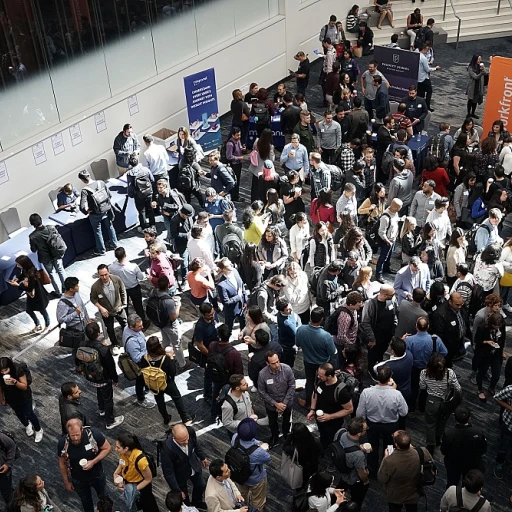
What are KSAOs?
Decoding KSAOs: Building Blocks of Workforce Excellence
In the world of employment and talent management, the term KSAOs often emerges when discussing the intricacies of job performance. KSAOs, an acronym for Knowledge, Skills, Abilities, and Other characteristics, serve as the foundational elements supporting an individual's professional capacity. These components are pivotal in addressing the ever-evolving skills gap observed in various industries. Understanding each element of KSAOs offers a glimpse into how they contribute to job success:- Knowledge: This refers to the theoretical or practical comprehension of a subject. Whether it’s industry-specific insights or broad educational backgrounds, knowledge encapsulates the information an employee needs to perform their roles effectively. It forms the base upon which skills and abilities are developed.
- Skills: These are the proficiencies needed to execute tasks with precision. Skills can be categorized into technical skills, such as data analysis or social media marketing strategies, and soft skills, such as communication and critical thinking. Both types of skills are integral to job performance and require continuous development to meet specific job requirements.
- Abilities: Unlike skills, abilities are the inherent attributes or talents an individual possesses. They include problem-solving capabilities, attention to detail, and the ability to create innovative solutions. Abilities enhance an employee's potential to adapt and grow within their roles.
- Other characteristics: This can cover a wide range of personal attributes, work habits, and interpersonal skills that influence an individual's performance. Characteristics such as leadership, adaptability, and cooperation play a significant role in team dynamics and overall job performance.
The Role of KSAOs in Identifying Skills Gaps
The Impact of KSAOs in Pinpointing Skill Deficiencies
In the realm of workforce development, identifying where skill deficiencies lie is crucial for optimizing job performance and ensuring that employees are equipped to meet the demands of their roles. KSAOs – Knowledge, Skills, Abilities, and Other characteristics – serve as a foundational tool in this assessment.
By analyzing essential questions to ask during skill assessments, organizations can effectively pinpoint skill gaps. This process requires a comprehensive understanding of job requirements and the ability to conduct a thorough job analysis.
Knowledge specific to a role helps determine whether an employee has the necessary foundational understanding to perform their duties. This includes technical skills, which are often hard skills that are vital for performance. It also involves keeping abreast with marketing strategies and advancements in the field.
Skills, both soft and hard, are equally significant. Soft skills such as communication skills and problem-solving skills contribute to an employee's overall capacity to adapt and excel in their work environment, while technical skills relate directly to task completion.
Abilities focus on an individual's inherent capabilities, such as critical thinking and attention to detail. These are abilities characteristics that, although innate, can be honed for better job performance and career development.
Other Characteristics capture the traits that influence an employee's aptitude to work in team settings, align with company culture, and exhibit growth potential. These may include factors like motivation and social media adeptness.
Employers and management teams leverage KSAO analysis for talent management by identifying and bridging gaps through targeted training and personal development initiatives, thus aligning employees' abilities with organizational needs.
Assessing KSAOs in the Hiring Process
Prioritizing KSAOs During Recruitment
In the hiring process, the understanding and assessment of KSAOs play a pivotal role in bridging the skills gap among potential employees. It begins with a thorough job analysis, which details the required knowledge, skills, and abilities (KSAs), assisting companies in aligning job requirements with candidate profiles. Managers must recognize the specific characteristics needed for successful performance in roles, whether it be technical skills for data analysis positions or communication skills essential in marketing and social media management. These assessments are critical in identifying candidates' ability to create, solve problems, and contribute to a company's growth and development. Considering the large pool of applicants, many employers resort to Applicant Tracking Systems (ATS) to filter candidates based on desired KSAOs. Understanding the prevalence of ATS among employers in Denver highlights the importance of KSAOs in this filtering process. Incorporating a blend of hard skills, such as technical abilities and specific knowledge, along with soft skills like critical thinking and attention to detail, becomes an indispensable strategy. Tailored recruitment processes that measure these integrated competencies guarantee that the chosen candidates possess the necessary attributes for high job performance. Additionally, ongoing employee development programs that enhance these KSAOs through targeted training ensure continuous alignment with evolving industry standards. Talent management teams should consistently refine their approach to evaluating these key attributes to foster potential in their workforce, ultimately leading to organizational prosperity.Training and Development to Enhance KSAOs
Nurturing Talent Through Targeted Training
In addressing the increasing gap between job requirements and existing employee capabilities, investing in training and development to enhance Knowledge, Skills, Abilities, and Other characteristics (KSAOs) is crucial. Organizations must first identify the specific skills and abilities characteristics that are lacking in their workforce. This identification can be achieved through a comprehensive analysis of current employee performance and the critical thinking required for specific job roles. Effective training programs should focus on several key areas:- Technical Skills: In industries where hard skills are essential, such as data analysis or software development, providing opportunities for employees to develop these skills is fundamental.
- Soft Skills: Equally important are communications skills and problem-solving abilities. Training in these areas can lead to improved job performance and better interpersonal interactions within the workplace.
- Attention to Detail: This characteristic is often overlooked but is critical for ensuring high-quality output in roles requiring precision and accuracy.
- Job Related Knowledge: Developing a deeper understanding of industry-specific knowledge promotes better analysis and decision-making.
Challenges in Measuring KSAOs
Overcoming the Hurdles in Measuring KSAOs
Measuring Knowledge, Skills, Abilities, and Other characteristics (KSAOs) is crucial for addressing the skills gap, yet it presents several challenges. These challenges can impact how effectively organizations identify and bridge gaps in employee performance and job requirements.
One of the primary difficulties lies in the subjectivity of assessment. While technical skills and knowledge can often be quantified through tests and certifications, soft skills such as communication skills and problem-solving abilities are harder to measure. These abilities characteristics require more nuanced evaluation methods, often relying on subjective judgment.
Another challenge is the dynamic nature of job roles. As industries evolve, so do the skills required. This constant change makes it difficult for organizations to keep their KSAO assessments up-to-date. For instance, the rise of social media and digital marketing strategies has introduced new skills that were not previously considered essential. This evolution necessitates continuous job analysis and updating of KSAO criteria.
Moreover, the integration of technology in the workplace adds another layer of complexity. While technology can aid in data analysis and performance management, it also requires employees to develop new technical skills. Balancing the need for hard skills with the development of soft skills is a challenge for talent management teams.
Finally, there is the issue of resource allocation. Comprehensive KSAO assessments require time and investment. Organizations must weigh the benefits of detailed evaluations against the costs, which can be substantial, especially for smaller businesses.
Despite these challenges, understanding and effectively measuring KSAOs is essential for career development and organizational growth. By addressing these hurdles, companies can better align their workforce's abilities with their strategic goals, ultimately enhancing job performance and employee satisfaction.












